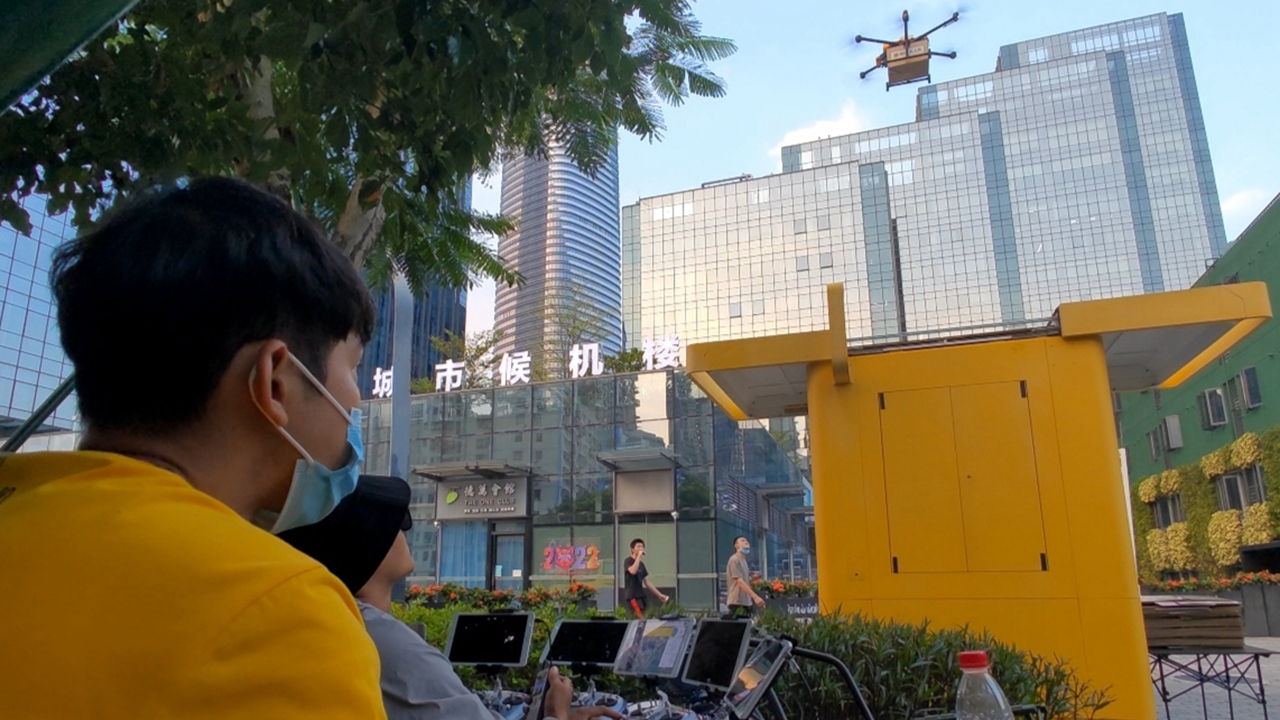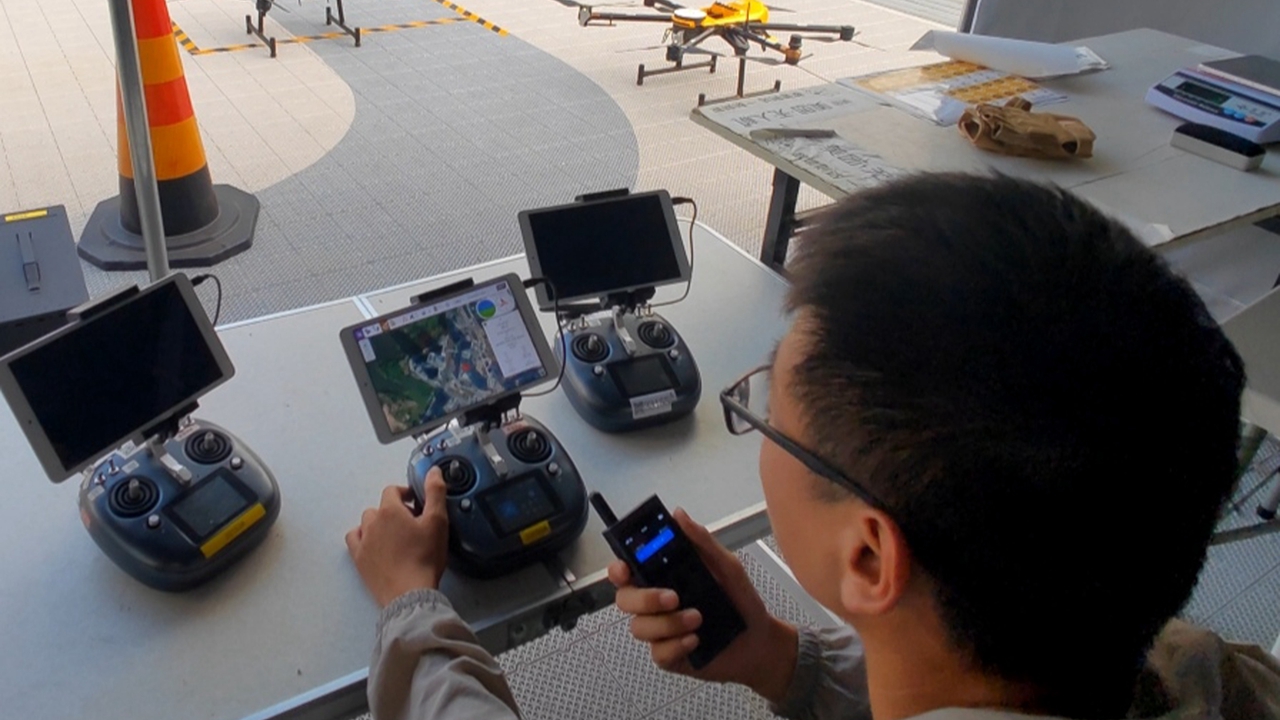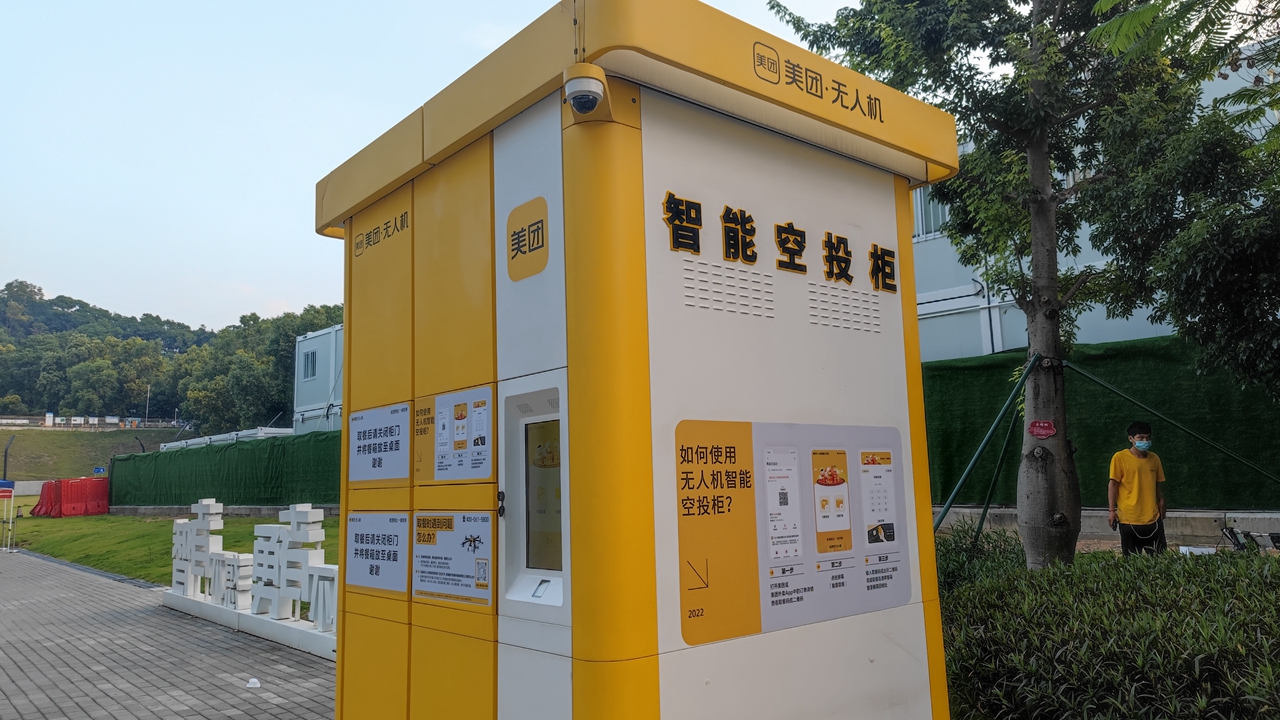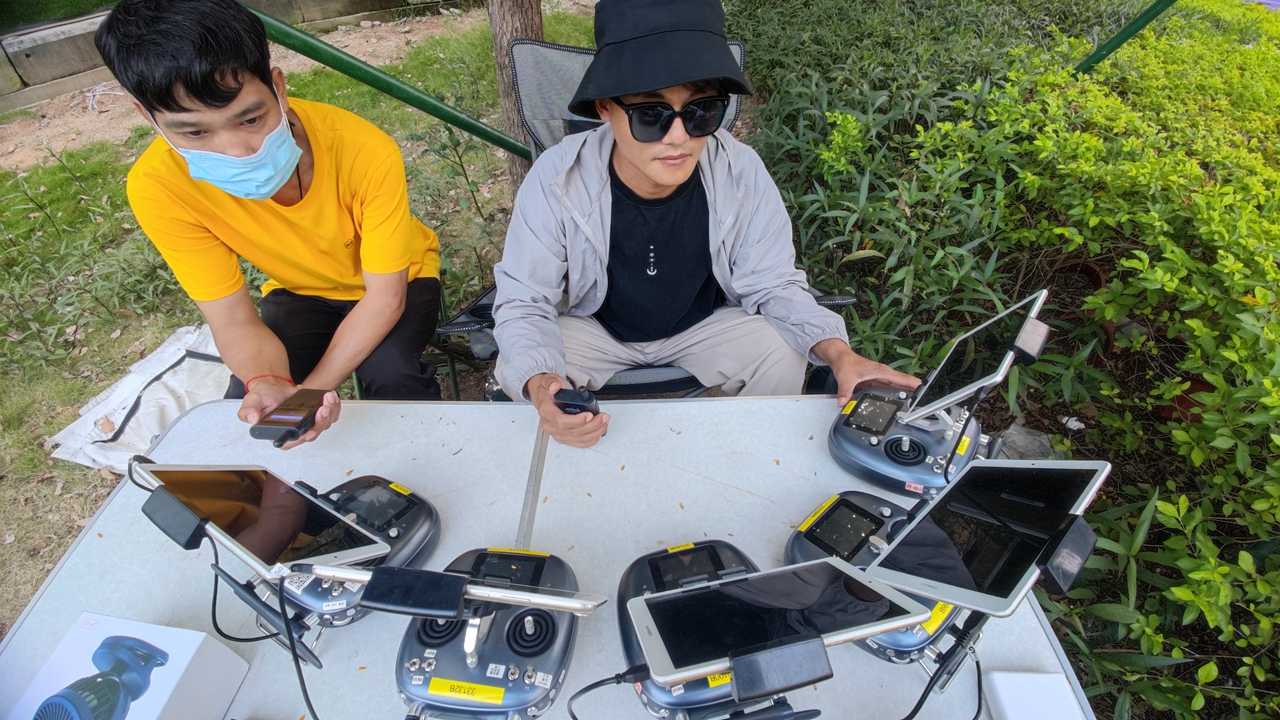City's drone delivery praised
In Shenzhen, home to a mature drone supply chain, the drone delivery service, for some residents and vendors, is no longer a novelty; it’s a part of their daily routine.
From iced tea and meals to daily necessities, placed orders could be completed within 30 minutes by the drones that fly among the skyscrapers through the urban areas of Shenzhen, according to the report published in MIT Technology Review on Tuesday.

A drone is seen dropping off a parcel at Galaxy World in Bantian, Longgang District, in this September 2022 photo.
The reporter personally tested the drone service by ordering iced tea over the phone through the Meituan app. The app noted that it would arrive by a drone at 2:03 p.m., and that was exactly when it came.
Compared with its U.S. peers such as Amazon and Wing that have had their eyes on drone delivery, Meituan had chosen to offer drone delivery in what is potentially the most challenging environment: dense urban environs, the report said.
“It’s an approach that makes sense in China, where most people live in high-rise apartment buildings in populous cities, and many of them order food delivery on a daily basis,” the report said.

A Meituan staffer monitors a drone delivery.
In 2022, Meituan made 120,000 drone deliveries in Shenzhen.
Meituan has a centralized control room in Shenzhen, where staff can take control of a drone in an emergency. The company launches its drones in Shenzhen from five delivery hubs, some of which are on the rooftops of gigantic shopping malls, linking 18 communities and office building with 11 routes.

The intelligent drop-off locker for drone delivery service in Bantian.
The workflow is a mix of human and automated labor. After the drone delivery system gets an order, a runner goes to the participating restaurants or other product sources, all located a few flights down in the shopping mall, picks up the order and takes it to the launchpad. The runner packages the food and drinks in a standardized cardboard box, and hands it off to a worker who manages the drones.
There are now more than 100 drones that can be deployed for deliveries in the city. On average, one operator is watching 10 drones at the same time.
Mao Yinian, director of drone delivery services at Meituan, tells MIT Technology Review, that the drones’ movements were controlled by a central algorithm, and the routes were predetermined.

Two Meituan operators watch drones during delivery.
“You can know in advance, at every precise second, where each drone will be and how fast its speed is, so the customers can expect the arrival time with a deviation of two seconds, instead of three minutes or even 10 minutes,” he said.
The businesses that the MIT Technology Review interviewed preferred to drone delivery as it was “predictable, convenient, faster and sustainable,” as the cardboard packages can be recycled.
The city is home to more than 1,200 UAV manufacturers including DJI and SF Technologies. Its industrial drones take up about 60% of the domestic market, while its UAV exports account for 90% the country’s total.
At a meeting of Shenzhen transport bureau earlier this year, Shenzhen will foster low altitude economy and speed up construction of test areas for civilized drone service. The city will expand the application scenarios for low altitude economy and support Meituan, SF and Heli-Eastern to conduct low-altitude flight tests and promote drone delivery services.
The city was also approved by the civil aviation administration to be a pilot area of unmanned aerial vehicle (UAV) aviation and was listed as a demonstration area of the national general aviation industry.